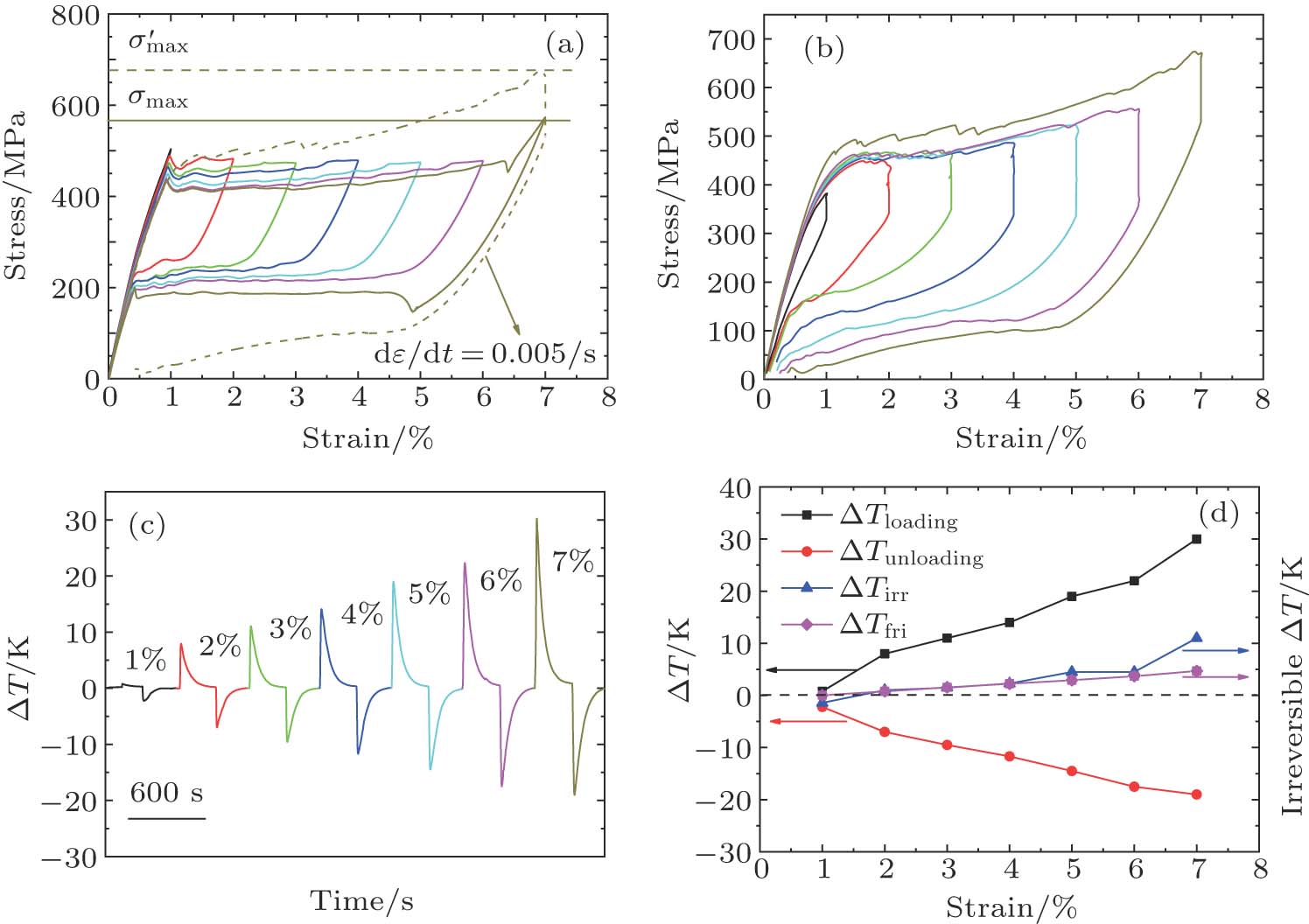Elastocaloric effect and mechanical behavior for NiTi shape memory alloys
(color online) (a) Stress–strain curves at different strain levels (ε = 1%–7%) under an approximately isothermal condition (low strain rate of 

Elastocaloric effect and mechanical behavior for NiTi shape memory alloys |
|
(color online) (a) Stress–strain curves at different strain levels (ε = 1%–7%) under an approximately isothermal condition (low strain rate of |
 |